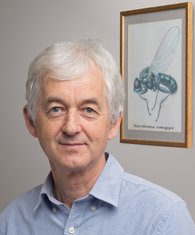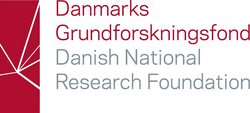On the 21st of November 2023, PROMEMO is hosting two topical seminars and a meeting to commemorate Professor Marco Capogna, who passed away on the 2nd of December 2022. The loss of an excellent neuroscientist is devastating for the community, and PROMEMO is retrieving Marco in our thoughts and research by having an occasion appreciating the lasting impact he left on science and on society.
The program begins at 14:00 (GMT+1) with two topical seminars by the co-chairs of this commemoration meeting, Professors Peter Somogyi and Francesco Ferraguti. They will share their latest scientific results, including some work with Marco when it begins.
The main memorial session (16:00, GMT+1; online/in-person hybrid) will be held for two hours, starting with an overview of Marco's scientific life trajectory, followed by remembering Marco by whom he has influenced all over the world, and closing the online session with a joint remembrance.
For in-person participants, a small PROMEMO reception will be held after 18:00 (GMT+1).
REGISTRATION
Registration deadline for in-person attendance is on Friday 17th November 2023.
Registration deadline for online attendance is on Monday 20th November 2023 at noon.
AIAS Auditorium, Aarhus University, bldg. 1632, Høegh-Guldbergs Gade 6B, DK-8000 Aarhus C, Denmark
Please find the program HERE.

Professor, FRS FMedSci
Department of Pharmacology,
Oxford Neuroscience,
University of Oxford,
UK

Professor
Institute of Pharmacology,
Medical University of Innsbruck,
Austria

Assistant Professor
PROMEMO,
Department of Biomedicine,
Aarhus University,
Denmark

Department of Pharmacology, Oxford Neuroscience,
University of Oxford, UK
"Exploration of cortical GABAergic neuronal diversity with Marco Capogna"
The function of any given cortical area is delivered by long-range glutamatergic neuronal outputs in co-operation with other parts of the nervous system. The activity of the glutamatergic neurons in any given area is shaped by more than 50 distinct local and some long-range GABAergic neuronal types, each specialising in affecting different cortical space and acting with distinct temporal dynamics. The action of each GABAergic neuronal type is supported by evolution-selected molecular mechanisms. I had the privilege to explore this diversity with Marco Capogna and other colleagues over decades at Oxford and marvel at the beauty of the neuronal diversity reflected in their spatio-temporal features. I will focus on two contrasting neuronal types, to the understanding of which Marco made seminal contributions. The the axo-axonic cell selectively innervates only the axon-initial segment of glutamatergic neurons, acts through GABA-A receptors and has profound influence on their firing. The neurogliaform cell in contrast, provides a uniquely dense, small axonal cloud influencing all neuronal processes through both synapses and by volume conduction acting through both GABA-A and GABA-B receptors. Both cell types participate in cortical function in all cortical areas including the hippocampal formation and the amygdala. The journey of exploration has been exciting and will continue long beyond our contributions and is already taken to new heights by some of our colleagues and students. I hope that one day the roles of each cell type will be explained in the context of a unified cortical spatio-temporal dynamic framework governing behaviour.

Institute of Pharmacology,
Medical University of Innsbruck,
Austria
"Neural circuits mediating the influence of metabotropic glutamate receptor 5 on anxiety"
Anxiety disorders are highly prevalent psychiatric illnesses posing an important social and economic burden. Their current pharmacotherapy shows limited efficacy with more than one third of patients being poorly responsive or therapy resistant. There is, therefore, a strong medical need for new therapeutic agents acting through novel mechanisms of action. Recent preclinical and clinical studies have opened new prospects for targeting metabotropic glutamate (mGlu) receptors as novel anxiolytics. In my talk, I will present new data on how (mechanisms) and where (neural circuits) mGlu5 receptor antagonists impact the negative valence domain. Circuits and mechanisms underlying the anxiolytic-like effect in mice of mGlu5 receptor negative allosteric modulators (NAM) and benzodiazepines (BZD) will also be compared. Our work reveals important operational differences between BZD and mGlu5-NAM in their acute anxiolytic-like effects, that may open new therapeutic avenues.

He was a highly valued friend and colleague, and in true meaning an inspiration to us all. He is deeply missed.
Words from PROMEMO PIs:
https://promemo.au.dk/display/artikel/in-memory-of-marco-capogna-professor-of-neurobiology-and-promemo-pi
Obituary in European Journal of Neuroscience:
https://onlinelibrary.wiley.com/doi/10.1111/ejn.15950
Obituary in Stiften:
https://stiften.dk/navne/mindeord-marco-var-en-eminent-neuroforsker-og-en-hoejt-vaerdsat-ven

